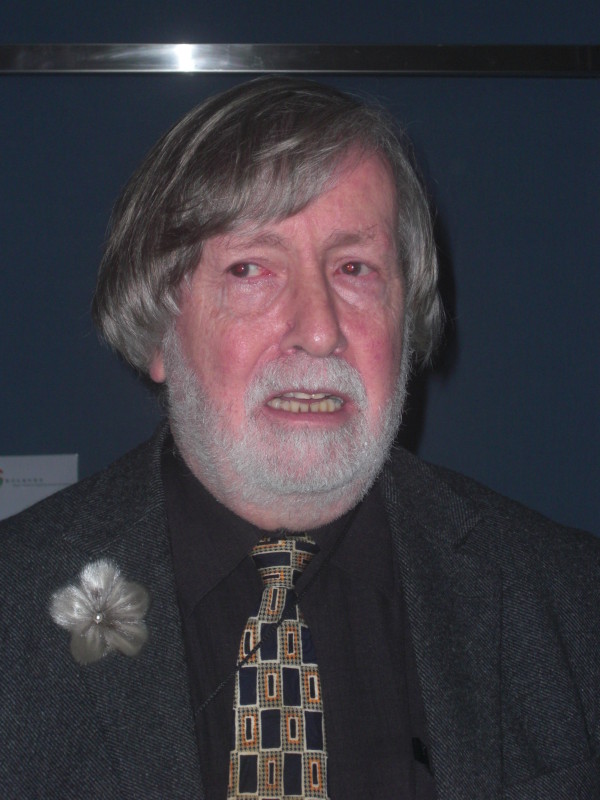Interview: Dr. Gordon Edwards, of the Canadian Coalition for Nuclear Responsibility (CCNR)
Pressenza: Could you expand on the statement: “produce commercial quantities of medical isotopes without the controversial use of highly-enriched, weapons-grade uranium”? Also, it seems so many parties are interested in this form of ‘medical isotopes’ but just how much is really needed for those medical and research activities, surely not that much?
Dr. Gordon Edwards: “The principal medical isotope we are talking about here is technetium-99m (Tc-99m), which has a short half-life of only 6 hours. It is therefore impractical to transport freshly-made Tc-99m over long distances because the amount of the isotope will diminish so rapidly that virtually the whole amount will be completely gone in a matter of days.
So instead, hospitals purchase a “moly cow” made of molybdenum -99 (Mo-99) – an isotope which has a 66-hour half-life, and which “decays” directly into technetium-99m/. Thus medical personnel can “milk the cow” – that is, harvest the technetium-99m – on a daily basis, and use the Tc-99m for that day’s work. Because of its longer half-life, Mo-99 diminishes in amount at a much slower rate, and the original amount will not be completely gone for several weeks.
So the question is, how to get the molybdenum-99 in the first place? Well, one way is to use the fact that it is a fission product of uranium-235. That means that inside every uranium-fuelled nuclear reactor, Mo-99 is being produced all the time – but it is mixed in with dozens of other fiercely radioactive fission products (such as cesium-137, iodine-131, strontium-90), activation products (such as cobalt-60, iron-55, niobium-93m) and transuranic actinides (such as plutonium,
americium and curium). To get the Mo-99 you would have to dissolve the fiercely radioactive irradiated fuel in boiling nitric acid and separate out the tiny amount of Mo-99 by chemical means, leaving a huge volume of highly radioactive liquid waste.
So to make the job easier, research reactors are used – no electricity production – and instead of “reprocessing” the irradiated fuel, special “targets” are introduced into the core of the reactor made of highly-enriched uranium (93.3 percent Uranium-235) and withdrawn at a predetermined
time so that the “target” can be dissolved in nitric acid etc. This has several advantages: (1) you can limit the time the target is in the reactor, cutting down on the superfluous inventory of other fission products etc; (2) you can vastly reduce the mass of material that needs to be dissolved
because the U-235 is so concentrated; (3) you can control the schedule more easily and achieve a kind of “assembly-line” procedure without shutting the reactor down.
Even if you use this nasty method for producing Mo-99 inside a nuclear reactor, and then reprocessing, you can use LEU (Low Enriched Uranium) instead of High Enriched Uranium (HEU) – it just means it takes longer and is more expensive mainly because there is a much larger mass of material to “reprocess” in order to get out the Mo-99. Argentina has been doing it this
way for quite some time.
The alternative to using a nuclear reactor is to use a “particle accelerator” to produce Mo-99. There are various ways to do this, using a cyclotron (a circular accelerator) or a linear accelerator (arranged in a straight line). In an accelerator, isotopes of various kinds can be produced by bombarding a “target” of some kind with a “beam” of very energetic (high-speed) charged particles. This is how a university or hospital can produce most if not all of the isotopes it needs
without the need for a nuclear reactor. For many years, starting in 1949, McGill University got all of its isotopes this way,
About the amount… Actually there is an absurdly elevated use of Tc-99m around the world – it is, in my opinion, GREATLY over-used! And by the way, Tc-99m has a half-life of 6 hours, it is true, but it immediately disintegrates to form Tc-99 (without the “m”) which has a half-life of
210,000 years! So, short-lived it is NOT.
But there are only a handful of reactors that produce isotopes in the whole world. The 55-year old NRU reactor at Chalk River produces 1/3 to 1/2 of all the Tc-99m used in the whole world! And it is only a research reactor with a capacity of 135 megawatts of heat (MWth). By comparison, a 1000 MWe power reactor, in order to produce 1000 megawatts of electricity, needs to produce about 3000 megawatts of heat. So the NRU reactor is not even 5 percent
as powerful as a more-or-less standard power reactor.
Older texts Dr Gordon Edwards has written on the subject:
http://www.ccnr.org/isotope_shortage.html
http://www.ccnr.org/isotopes.html










